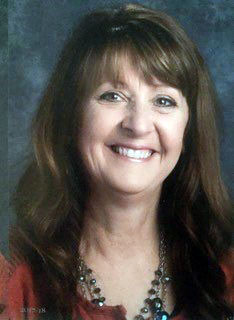Teacher Award
State Teacher Award 2018
Jana Maw

My ancestors farmed the hills of North Carolina. They grew crops, raised chickens, and lived off the land—this was their way of life. I realize that our lives today have changed in many ways, but we still have the same obligation to care for our land and resources, and be knowledgeable regarding where our food and fiber comes from. Teaching about agriculture is an integral part of our daily lives; it is as simple as that. As part of my goal to integrate and increase agricultural literacy into my five 6th grade science rotation classes, I implemented a series of year-long lessons directed toward “What is Agriculture?”
At the beginning of the school year, I gave each student a piece of paper stating the following question: What is Agriculture? Students were instructed to answer this question without any additional prompting. Most of my 150 Farr West 6th grade students responded with an assortment of answers similar to the following: “It’s your original culture or study of culture,” “A foreign way of living,” “The study of old things.” Out of my 150 students, approximately 90% could not correctly answer the question. My objective was to increase students’ understanding of agriculture and its impact on their daily lives.
Using the three dimensions of science understanding—in line with Utah Science with Engineering Education (SEEd) Standards—I required my students to conduct a Science Inquiry Project with an agricultural connection. Before selecting a project, the students investigated an actual potato and then came up with some investigative questions. Some of their investigative questions were as follows: What are the spots on the potato? Why is this potato so juicy? Does it have a core? How and where do potatoes grow? The students then selected their own project, based upon what they “wonder” about. They followed a set of scientific guidelines, wrote a summary report, and then presented their acquired information to the class. Students learned that agriculture is connected to not only sugar, eggs, seeds, and salt, but it is also connected to technology and more. They learned that agriculture plays a very large role in the world around them if they search for it.
One of the most engaging activities taught and enjoyed in my class was researching and then writing an informational text in the form of a graphic novel—a story created in comic strip frames. Students applied fine arts creative visual arts standards while organizing and sharing their findings. They also wrote summary paragraphs and attached them to the backs of their graphic novels. Some of the topics for this writing assignment included the history of the potato, the Irish Potato Famine, the history of the potato chip, and health and nutrition. It is a wonderful process of discovery as we share and gain newfound information together. The graphic novels are then shared with the class in the form of a gallery walk. Students share their potato stories as they walk and read.
The culminating lesson addressed standards in writing and fine arts as students were asked once again, “What is agriculture?”
They were given the opportunity to write an acrostic poem reflecting on what they learned the past year. Then they created textile-based projects by transferring simple drawings onto unbleached muslin and making a batik-style quilt. This beautiful quilt was a visual connection between students’ understanding of where their food, clothing, and shelter come from—a collective, personal representation that agriculture is all around them and that agriculture is important in their daily lives.
